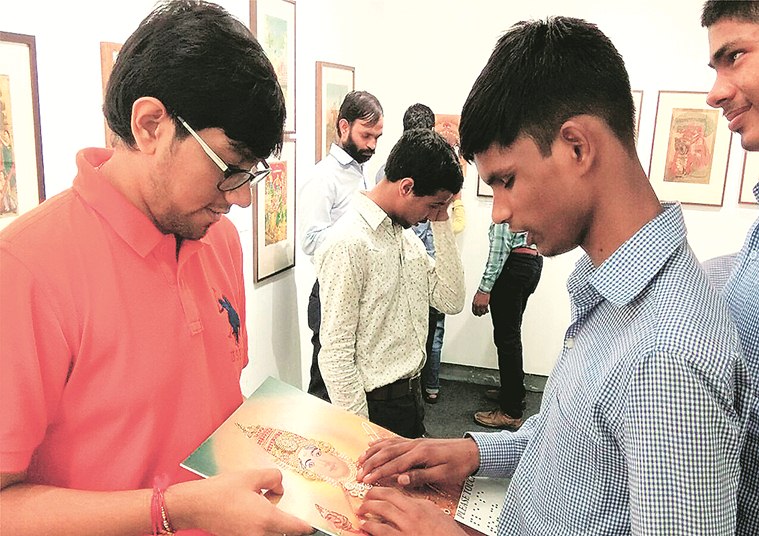What the eyes can’t see, fingers feel
Siddhant Shah is bridging the gap between cultural heritage and disability with innovative efforts

Siddhant Shah (in red) providing visually-challenged visitors a tactile experience in art
Inclusive is a word that guides, drives and inspires art and disability expert Siddhant Shah, who specialises in bridging the gap between cultural heritage and disability through the initiative, ‘Access for All’. The 27-year-old, also a heritage architect and access consultant, with his team and experts is steadily pushing the boundaries of physical, intellectual and social access in spaces like museums, art galleries, cultural tourism sites, monuments and public spaces.
“Inclusivity is key to inspiring people with different special needs. We need to open spaces in our society for everyone,” says Shah. Mumbai-based Shah is in the city to conduct a series of specially designed activities for visitors with additional access needs such as visual impairments and learning disabilities at the ongoing exhibition, ‘The Printed Picture, Four Centuries of Indian Printmaking’.

The Punjab Lalit Kala Akademi and Delhi Art Gallery (DAG) have collaborated with ‘ABHAS – A Tactile Experience’ to conduct the activities. DAG Modern runs ‘Abhas’, an initiative that focusses on providing a sensory experience through the use of audio and visual aids, with Shah as their consultant. Visitors are invited to take part in guided ‘touch tours’ of tactile reproductions from the exhibition display and ‘blind-folded’ sensitisation art walks using textured materials to create a visual memory of the works. “We design tactile artworks, which are created in relief with textured materials for the benefit of visually impaired persons. We also create Braille books and stations, tactile trails and pathways in museums and galleries,” says Shah, a Stavros Niarchos Scholar, who finished his MA in heritage management from University of Kent (Athens Campus, Greece), has a bachelor’s degree in architecture, and also has a post-graduate diploma in Indian Aesthetics.
Shah says it was when his mother became partially sighted, that he began looking at the world around him with a different perspective, especially the lack of accessibility for all. “My experience in Greece, where museums are planned keeping in view the needs of different people, encouraged me to create experience-based prototypes using the museum collection in India, to make our cultural scape an inclusive one. It was not easy, for apart from a lack of awareness and sensitisation, funding facilities were few, as were resources to create products and services for those with special needs.”
Shah, who first began working with The National Museum in Delhi and The City Palace in Jaipur, went on to create a Braille Book for the State Bank Museum, Karachi. At the 2016 India Art Fair in Delhi, DAG initiated a new dialogue making art accessible to the visually impaired .
Shah and his team partner with a range of experts through workshops, teachers training, and therapists. “The idea is to start a discussion. In a culture like ours, in which we engage all our senses, I often ask the question, is sight so important to appreciate art? The need of the hour is to take the initiative to the next level, where we can collaborate and connect with others. It is heartening that more and more spaces are recognising the need,” says Shah.






















No hay comentarios:
Publicar un comentario